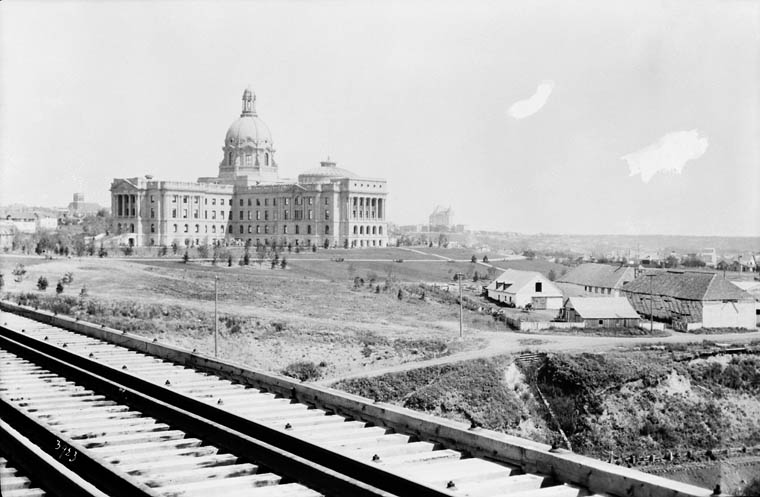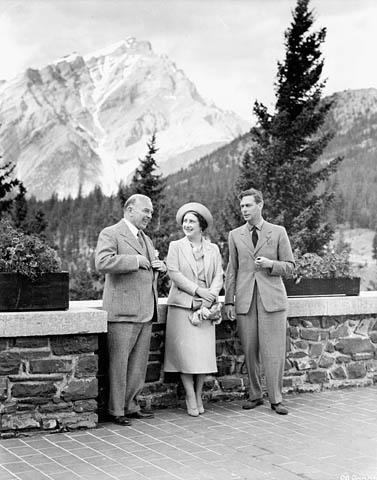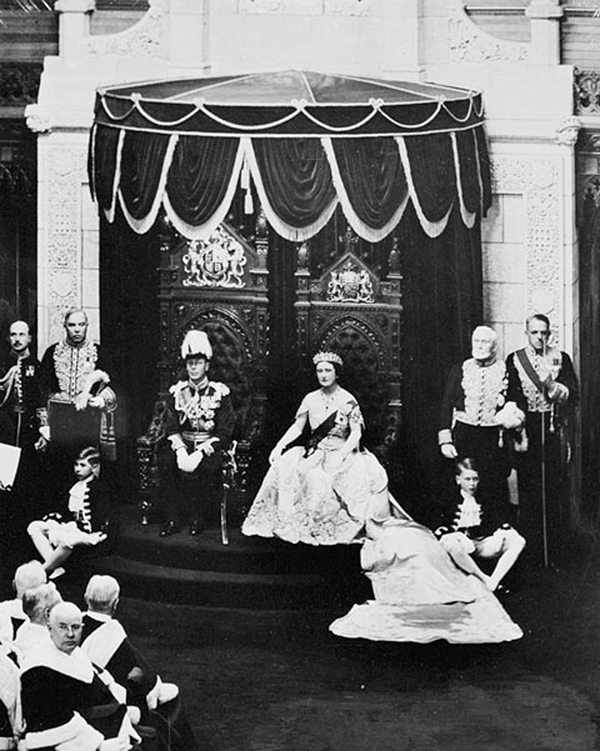|
Legislative Assembly Of Alberta
The Legislative Assembly of Alberta is the deliberative assembly of the province of Alberta, Canada. It sits in the Alberta Legislature Building in Edmonton. Since 2012 the Legislative Assembly has had 87 members, elected first past the post from single-member electoral districts. Bills passed by the Legislative Assembly are given royal assent by the lieutenant governor of Alberta, as the viceregal representative of the King of Canada. The Legislative Assembly and the Lieutenant Governor together make up the unicameral Alberta Legislature. The maximum period between general elections of the assembly, as set by Section 4 of the Canadian Charter of Rights and Freedoms is five years, which is further reinforced in Alberta's ''Legislative Assembly Act''. Convention dictates the premier controls the date of election and usually selects a date in the fourth or fifth year after the preceding election. Amendments to Alberta's ''Election Act'' introduced in 2024 fixed the date of ... [...More Info...] [...Related Items...] OR: [Wikipedia] [Google] [Baidu] |
31st Alberta Legislature
The 31st Alberta Legislative Assembly was constituted after the 2023 Alberta general election, general election on 29 May 2023. The United Conservative Party (UCP), led by incumbent Premier of Alberta, Premier Danielle Smith, won a majority of seats (49) and formed the government. The Alberta New Democratic Party, New Democrats, led by former Premier Rachel Notley, won the second most seats (38) and formed the official opposition. First session The first session began on 20 June 2023. Jennifer Johnson (Canadian politician), Jennifer Johnson, who had appeared on the election ballot as a UCP candidate but was disavowed by the party during the campaign after making comments comparing transgender children to faeces, was seated as an independent on the Opposition side. After election of officers of the assembly, including Nathan Cooper (Canadian politician), Nathan Cooper's re-election as speaker, the assembly adjourned for the summer. The session resumed on 30 October with the speech ... [...More Info...] [...Related Items...] OR: [Wikipedia] [Google] [Baidu] |
Alberta Legislature Building
The Alberta Legislature Building, located in Edmonton, is the meeting place of the Legislative Assembly of Alberta and the Executive Council of Alberta. It is often shortened to "the Ledge". The Alberta Legislature Building is at 10801 97 Avenue NW. Free tours of the facility are offered throughout the week. The building is also connected via underground walkway to the Government Centre station and Government Centre Transit Centre. Location The building is on a promontory overlooking the scenic North Saskatchewan River valley near the location of Fort Edmonton, Mark V (1830–1915), a Hudson's Bay Company fur-trading post, a long-established economic and administrative centre of the western Prairies. On the south lawn of the legislature grounds there are marker posts indicating where the old fort used to be. It is just up the hill from the archaeological finds at Rossdale Flats to the east, remnants of a long-standing First Nations campsite and location of an earlier ... [...More Info...] [...Related Items...] OR: [Wikipedia] [Google] [Baidu] |
Minority Government
A minority government, minority cabinet, minority administration, or a minority parliament is a government and cabinet formed in a parliamentary system when a political party or coalition of parties does not have a majority of overall seats in the legislature. It is sworn into office, with or without the formal support of other parties, enabling a government to be formed. Under such a government, legislation can only be passed with the support or consent of enough other members of the legislature to provide a majority, encouraging multi-partisanship. In bicameral legislatures, the term relates to the situation in the chamber whose confidence is considered most crucial to the continuance in office of the government (generally, the lower house). A minority government tends to be less stable than a majority government because, if they can unite, opposing parliamentary members have sufficient numbers to vote against legislation, or even bring down the government with a vote of no c ... [...More Info...] [...Related Items...] OR: [Wikipedia] [Google] [Baidu] |
Canadian Charter Of Rights And Freedoms
The ''Canadian Charter of Rights and Freedoms'' (), often simply referred to as the ''Charter'' in Canada, is a bill of rights entrenched in the Constitution of Canada, forming the first part of the '' Constitution Act, 1982''. The ''Charter'' guarantees certain political rights to Canadian citizens and guarantees the civil rights of everyone in Canada. It is designed to unify Canadians around a set of principles that embody those rights. The ''Charter'' was proclaimed in force by Queen Elizabeth II of Canada on April 17, 1982, as part of the ''Constitution Act, 1982''. The ''Charter'' was preceded by the '' Canadian Bill of Rights'', enacted in 1960, which was a federal statute rather than a constitutional document. The ''Bill of Rights'' exemplified an international trend towards formalizing human rights protections following the United Nations' ''Universal Declaration of Human Rights'', instigated by the country's movement for human rights and freedoms that emerged af ... [...More Info...] [...Related Items...] OR: [Wikipedia] [Google] [Baidu] |
Section 4 Of The Canadian Charter Of Rights And Freedoms
Section 4 of the ''Canadian Charter of Rights and Freedoms'' is the second of three democracy, democratic rights sections in the ''Charter'', enshrining a constitutional requirement for regular Elections in Canada, federal, provincial and territorial elections that cannot be arbitrarily delayed or suspended. Subsection 4(1) provides that the maximum term of the House of Commons of Canada, and of all provincial and territorial legislative assemblies, is five years. A narrow exception to this rule in case of war or rebellion is provided under subsection 4(2), but any extension would still require support of a two-thirds majority in each affected legislature. Text The section provides that, Background Prior to the enactment of the ''Charter'' as part of the ''Constitution Act, 1982'', the Constitution of Canada already limited the length which the House of Commons to not more than 5 years under section 50 of the ''Constitution Act, 1867, British North America Act, 1867''. It reads ... [...More Info...] [...Related Items...] OR: [Wikipedia] [Google] [Baidu] |
Alberta Legislature
The Alberta Legislature is the unicameral legislature of the province of Alberta, Canada. The legislature is made of two elements: the lieutenant governor of Alberta, lieutenant governor (representing the King of Canada),. and the Legislative Assembly of Alberta. The legislature has existed since Alberta was formed out of part of the North-West Territories in 1905. Like the Canadian federal government, Alberta uses a Westminster System, Westminster-style parliamentary government, in which members are sent to the Legislative Assembly after List of Alberta general elections, general elections and the lieutenant governor appoints the person who can command a majority of the members of the Assembly, typically the leader of the party with the most seats, as Premier of Alberta. The premier then recommends the appointment of the Executive Council of Alberta. The premier is Alberta's head of government, while the King of Canada is its head of state. List of legislatures Following is a ... [...More Info...] [...Related Items...] OR: [Wikipedia] [Google] [Baidu] |
Unicameral
Unicameralism (from ''uni''- "one" + Latin ''camera'' "chamber") is a type of legislature consisting of one house or assembly that legislates and votes as one. Unicameralism has become an increasingly common type of legislature, making up nearly 60% of all national legislatures and an even greater share of subnational legislatures. Sometimes, as in New Zealand and Denmark, unicameralism comes about through the abolition of one of two bicameral chambers, or, as in Sweden, through the merger of the two chambers into a single one, while in others a second chamber has never existed from the beginning. Rationale for unicameralism and criticism The principal advantage of a unicameral system is more efficient lawmaking, as the legislative process is simpler and there is no possibility of gridlock (politics), deadlock between two chambers. Proponents of unicameralism have also argued that it reduces costs, even if the number of legislators stays the same, since there are fewer instituti ... [...More Info...] [...Related Items...] OR: [Wikipedia] [Google] [Baidu] |
Monarchy In Alberta
By the arrangements of the Canadian federation, Canada's monarchy operates in Alberta as the core of the province's Westminster-style parliamentary democracy. As such, the Crown within Alberta's jurisdiction is referred to as ''the Crown in Right of Alberta'', ''His Majesty in Right of Alberta'', or ''The King in Right of Alberta''. The Constitution Act, 1867, however, leaves many royal duties in Alberta specifically assigned to the sovereign's viceroy, the Lieutenant Governor of Alberta, whose direct participation in governance is limited by the conventional stipulations of constitutional monarchy. Constitutional role The role of the Crown is both legal and practical; it functions in Alberta in the same way it does in all of Canada's other provinces, being the centre of a constitutional construct in which the institutions of government acting under the sovereign's authority share the power of the whole. It is thus the foundation of the executive, legislative, and judicial ... [...More Info...] [...Related Items...] OR: [Wikipedia] [Google] [Baidu] |
Lieutenant Governor Of Alberta
The lieutenant governor of Alberta () is the representative in Alberta of the monarch. The lieutenant governor is appointed in the same manner as the other provincial viceroys in Canada and is similarly tasked with carrying out most of the monarch's constitutional and ceremonial duties. Salma Lakhani is the current lieutenant governor. On 26 August 2020, she was installed as the 19th lieutenant governor, becoming the first South Asian and Muslim in Canadian history to hold the role. Role and presence The lieutenant governor is vested with a number of governmental duties and is also expected to undertake various ceremonial roles. The lieutenant governor, who is the Chancellor and a member of the Alberta Order of Excellence, inducts deserving individuals into the order. Upon appointment, the lieutenant governor automatically becomes a Knight or Dame of Justice and the Vice-Prior in Alberta of the Most Venerable Order of the Hospital of Saint John of Jerusalem. The viceroy f ... [...More Info...] [...Related Items...] OR: [Wikipedia] [Google] [Baidu] |
Royal Assent
Royal assent is the method by which a monarch formally approves an act of the legislature, either directly or through an official acting on the monarch's behalf. In some jurisdictions, royal assent is equivalent to promulgation, while in others that is a separate step. Under a modern constitutional monarchy, royal assent is considered little more than a formality. Even in nations such as the United Kingdom, Norway, the Netherlands, Liechtenstein and Monaco which still, in theory, permit their monarch to withhold assent to laws, the monarch almost never does so, except in a dire political emergency or on advice of government. While the power to veto by withholding royal assent was once exercised often by European monarchs, such an occurrence has been very rare since the eighteenth century. Royal assent is typically associated with elaborate ceremony. In the United Kingdom the Sovereign may appear personally in the House of Lords or may appoint Lords Commissioners, who anno ... [...More Info...] [...Related Items...] OR: [Wikipedia] [Google] [Baidu] |
Electoral District
An electoral (congressional, legislative, etc.) district, sometimes called a constituency, riding, or ward, is a geographical portion of a political unit, such as a country, state or province, city, or administrative region, created to provide the voters therein with representation in a legislature or other polity. That legislative body, the state's constitution, or a body established for that purpose determines each district's boundaries and whether each will be represented by a single member or multiple members. Generally, only voters (''constituents'') who reside within the district are permitted to vote in an election held there. The district representative or representatives may be elected by single-winner first-past-the-post system, a multi-winner proportional representative system, or another voting method. The district members may be selected by a direct election under wide adult enfranchisement, an indirect election, or direct election using another form ... [...More Info...] [...Related Items...] OR: [Wikipedia] [Google] [Baidu] |
First Past The Post
First-past-the-post (FPTP)—also called choose-one, first-preference plurality (FPP), or simply plurality—is a single-winner voting rule. Voters mark one candidate as their favorite, or First-preference votes, first-preference, and the candidate with more first-preference votes than any other candidate (a Plurality (voting), ''plurality'') is elected, even if they do not have more than half of votes (a ''majority''). FPP has been used to elect part of the House of Commons of the United Kingdom, British House of Commons since the Middle Ages before spreading throughout the British Empire. Throughout the 20th century, many countries that previously used FPP have abandoned it in favor of other electoral systems, including the former British colonies of Australia and New Zealand. FPP is still De jure, officially used in the majority of U.S. state, US states for most elections. However, the combination of Partisan primary, partisan primaries and a two-party system in these jurisd ... [...More Info...] [...Related Items...] OR: [Wikipedia] [Google] [Baidu] |








